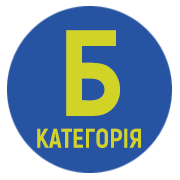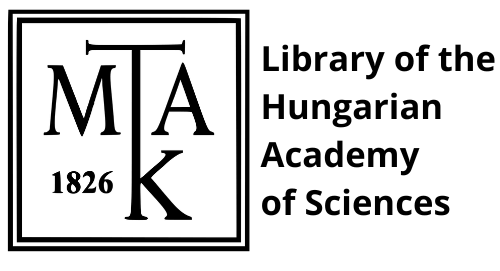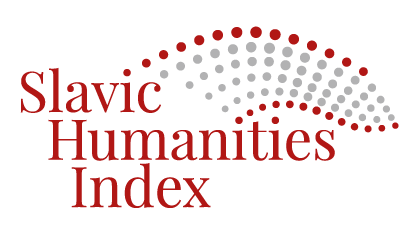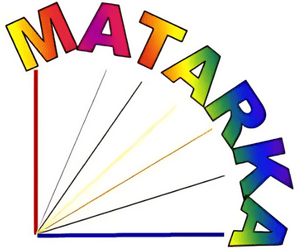About an online dictionary of the pluricentric Hungarian language
DOI:
https://doi.org/10.58423/2786-6726/2022-1-27-42Keywords:
pluricentric language, Hungarian language, online dictionary, Transcarpathia, Carpathian Basin, loanwordsAbstract
A pluricentric language is a language that is used in at least two countries where it has the official status of a state, commonwealth or regional language with at least partially its own (codified) norms that usually contribute to the personal identity of speakers. Pluricentric languages have one dominant variant and (one or) several non-dominant variaties. As a result of the political fragmentation of the Hungarian language area that developed after the First World War, and then, confirmed by the peace treaties after the Second World War, the Hungarian language is one of the pluricentric languages in Europe. The article examines the results of close linguistic contacts in non-dominant varieties of the modern Hungarian language used outside Hungary. The consequences of language contacts are highlighted on the basis of lexical borrowings, which are fixed in a specific online dictionary. The dictionary consists of borrowed words of foreign origin used by autochthonous Hungarian minorities living in the Carpathian Basin outside Hungary. In addition to words and phrases that are used exclusively in the speech and writing of Hungarians in countries neighboring Hungary, words that are also used in Hungary, but with a different meaning, were also collected in the database. As of the end of September 2022, the dictionary database contained 5,034 dictionary entries (words). Since this online loanword list contains direct borrowings from many languages of the Carpathian Basin that are in contact with Hungarian (mostly from the official or state languages of Hungary's neighboring countries, including Slovak, Ukrainian, Romanian, Serbian, Croatian, Slovenian, and German), the database is a rich source for the study of contacts between Hungarian and Indo-European languages. Based on the material of the online dictionary, it was found that among the lexical borrowings of the Hungarian language – as a result of centuries-old contacts between Hungarian and various Slavic languages – borrowings of Slavic origin constitute the largest layer of vocabulary of foreign origin in the Hungarian language. The result of the project is a dictionary database that provides an opportunity for a comparative analysis of the vocabulary of non-dominant variants of the pluricentric Hungarian language.
References
Benő Attila – Lanstyák István – P. Márkus Katalin – M. Pintér Tibor 2021. A Termini magyar–magyar szótár és adatbázis szerkezeti és szerkesztési sajátosságai [Structural and editorial features of the Termini Hungarian–Hungarian dictionary and database]. Magyar Nyelvőr [Hungarian Language Guard] 145. (2021/4.) 378–379 o. (In Hungarian).
Benő Attila – Juhász Tihamér – Lanstyák István 2020. A Termini „határtalan” szótára. [The ’Borderless’ Dictionary of the Termini Research Network] Magyar Tudomány [Hungarian Science] 181/2: 153–163. o. (In Hungarian).
Beregszászi Anikó 1997. Kárpátaljai szavak a Magyar Értelmező Kéziszótárban? [Subcarpathian words in the Concise Defining Dictionary of Hungarian?] Pánsíp [Pan Whistle] 5(2): 24–27. o. (In Hungarian).
Clyne, Michael ed. 1992. Pluricentric Languages: Differing Norms in Different Nations. Berlin et. al.: Mouton de Gruyter.
Csernicskó István 1997. Kárpátaljai szójegyzék [A list of Subcarpathian vocabulary]. Pánsíp [Pan Whistle]5(2): 28–29. o. (In Hungarian).
Csernicskó István – Márku Anita 2021. Ízelítők a Termini magyar–magyar szótár kárpátaljai anyagából [Samples of the Subcarpathian material of the Termini Hungarian-Hungarian dictionary]. Magyar Nyelvőr [Hungarian Language Guard] 145. (2021/4.) 417–431. o. (In Hungarian).
Csernicskó. István – Anita Márku – Réka Máté 2022. The (online) dictionary of pluricentric Hungarian. In: Rudolf Muhr, Reglindis De Ridder, Gerhard Edelmann, Aditi Gosh eds. Pluricentric languages in different theoretical and educational contexts. Graz/Berlin, PCL-Press. pp. 145–154.
Eőry Vilma 2007. Értelmező szótár+ [Defining dictionary plus]. Budapest: Tinta Kiadó (In Hungarian).
Fenyvesi, Anna 2005. Introduction. In: Anna Fenyvesi ed. Hungarian Language Contact Outside Hungary. Studies on Hungarian as a minority language. Amsterdam–Philadelphia: John Benjamins Publishing Company. pp. 1–9.
Gerstner Károly 2003. A magyar nyelv szókészlete [The vocabulary of the Hungarian language]. In: Kiefer Ferenc szerk. A magyar nyelv kézikönyve [Handbook of the Hungarian language]. Budapest: Akadémiai Kiadó. 117–157. o. (In Hungarian).
Kiss Jenő 2004. Egy régi-új nyelvi sikerkiadvány: a Magyar értelmező kéziszótár [An old-new language success publication: the Concise defining dictionary of Hungarian]. Magyar Tudomány [Hungarian Science] 5: 670–673. o.
(In Hungarian).
Kiss Lajos 1976. Szláv tükörszók és tükörjelentések a magyarban. Nyelvtudományi Értekezések 92. [Slavic mirror words and meanings in Hungarian. Discourses in linguistics 92]. Budapest: Akadémiai Kiadó (In Hungarian).
Kniezsa István 1955. A magyar nyelv szláv jövevényszavai 1–2. [Slavic loanwords in Hungarian language]. Budapest: Akadémiai Kiadó (In Hungarian).
Kontra, Miklós 1997. Hungarian Linguistic Traitors Champion the Cause of Contact Dialects. In: W. Wölck and A. de Houwer eds. Recent Studies in Contact Linguistics. Bonn: Dümmler. pp. 181–187.
Kontra Miklós – Saly Noémi szerk. 1998. Nyelvmentés vagy nyelvárulás? Vita a határon túli magyar nyelvhasználatról. [Rescue or treason of language? Debate on the Hungarian language use beyond the borders]. Budapest: Osiris (In Hungarian).
Lanstyák István 1995a. A magyar nyelv központjai [The centers of the Hungarian language]. Magyar Tudomány [Hungarian Science] 40(10): 1170–1185. o.
(In Hungarian).
Lanstyák István 1995b. Többközpontú nyelv-e a magyar? [Is Hungarian a pluricentric language?] Irodalmi Szemle [Literary Review] 38(1): 72–84. o. (In Hungarian).
Lanstyák István 2008. A magyar szókészlet szétfejlődése 1918 után. [The development of the Hungarian vocabulary after 1918] In: Fedinec Csilla szerk. Értékek, dimenziók a magyarságkutatásban. [Values, dimensions in Hungarian research]. Budapest: MTA Magyar Tudományosság Külföldön Elnöki Bizottság. 118–135. o. (In Hungarian).
Lanstyák István – Szabómihály Gizella 1997. Magyar nyelvhasználat – iskola – kétnyelvűség [Hungarian language use, schools, and bilingualism]. Bratislava: Kalligram Könyvkiadó (In Hungarian).
Lanstyák István – Szabómihály Gizella 1994. Standard – köznyelv – nemzeti nyelv. [Standard – common language- national language] Szabad Újság [Free Journal] 1994. december 7., 9. o. (In Hungarian).
Máté, Réka – István Csernicskó 2020. The pluricentricity of Hungarian from a Transcarpathian point of view as demonstrated by family names. In: Ildikó Vančo – Rudolf Muhr – István Kozmács – Máté Huber eds. Hungarian as a Pluricentric Language in Language and Literature. Frankfurt am Main et al.: Peter Lang D. pp. 55-68.
Melich János 1910. Nyelvünk szláv jövevényszavai. [Slavic loanwords to our language]. Budapest: A Magyar Nyelvtudományi Társaság Kiadványai (In Hungarian).
Vančo, Ildikó – Rudolf Muhr – István Kozmács – Máté Huber eds. 2020. Hungarian as a Pluricentric Language in Language and Literature. Frankfurt am Main et al.: Peter Lang D.
Muhr, Rudolf 2012. Linguistic dominance and non-dominance in pluricentric languages. A typology. In: Rudolf Muhr – Catrin Norrby – Leo Kretzenbacher – Carla Amorós eds. Non-Dominant Varieties of Pluricentric Languages. Getting the Picture. In memory of Michael Clyne. Frankfurt am Main et al.: Peter Lang D. pp. 23–48.
Muhr, Rudolf 2016. The state of the art of research on pluricentric languages: Where we were and where we are now. In: Rudolf Muhr – Kelen Ernesta Fonyuy – Zeinab Ibrahim – Corey Miller eds. 2016. Pluricentric Languages and non-dominant Varieties worldwide. Volume 1: Pluricentric Languages across continents – Features and usage. Wien et. al., Peter Lang Verlag. p. 9-32.
Péntek, János 2009. Termini: The Network of Hungarian linguistic Research Centres in the Carpathian Basin. Minorities Research 11: pp. 97–123.
Pusztai Ferenc ed. 2003. Magyar értelmező kéziszótár. Második, átdolgozott kiadás [Concise defining dictionary of Hungarian. 2nd, revised edition]. Budapest: Akadémiai Kiadó (In Hungarian).
Thomason, S.G. – Kaufman, T. 1988. Language Contact, Creolization, and Genetic Linguistics. Berkeley–Los Angeles–Oxford: University of California Press.
Tolcsvai Nagy Gábor ed. 2007. Idegen szavak szótára [Dictionary of foreign words]. Budapest: Osiris Kiadó (In Hungarian).
URL1: http://termini.nytud.hu/htonline//htlista.php?action=search
Downloads
Published
How to Cite
Issue
Section
License
Authors retain copyright and grant the journal the right of first publication. The work is simultaneously licensed under a Creative Commons Attribution 4.0 International License (CC BY 4.0), which permits others to share the work with appropriate credit given to the author(s) and the initial publication in this journal.

















